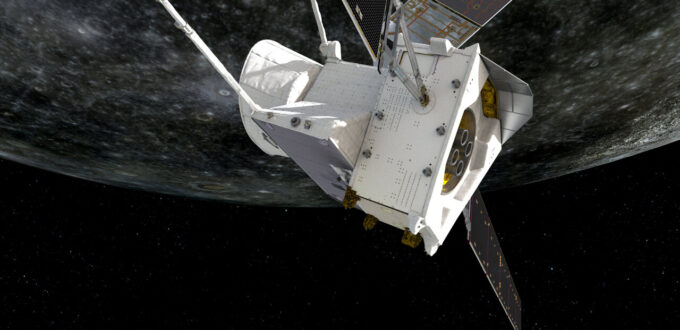Becicolumbo is an Esa-Jaxa mission together who is currently in space implementation operations. Recently, Esa shared the image of planet mercury taken on October 1, 2021. The picture was taken when the Beicolumbo spacecraft flew past Mercury for gravitational assistance maneuvers.
Pictures taken at 23:44:12 UTC use the Mercury Module Monitoring camera. When the image is taken, the spacecraft is around 2418 kilometers from the surface of the planet. However, the closest approach to spacecraft that will be made for mercury is around 199 kilometers, which occur at 23:34 UTC. It is not clear why no images are shared from a much closer approach.
ESA said the 2 monitoring camera provided snapshots and black and white resolution and 1024 resolution by 1024. The mercury section we saw in the picture is the northern hemisphere, including Sihtu Planitia, which has been covered by lava. The more refined and brighter part of the picture is the plain around the Calvino crater, known as the Rudaki plain.
One of the larger craters was seen in the picture called Lermontov crater and measuring 166 kilometers. The crater is brighter than the other on the surface of this planet because of the unique features of mercury known as “Hollows.” Hollow is an area where the volatile element escapes into space, and the crater has a hole where the volcanic eruption has occurred.
These features will be studied in more detail after Bicicolumbo is in orbit around mercury. Gravity Assist Maneuver is the first of mercury and is the fourth of nine total flybys of spacecraft will be made. The mission will reach seven years and will include FlyBys from several planets in the solar system. The Bepicolumbo mercury transfer module contains a pair of science orbits, including Planetary Mercury Esa orbiters and Merkurius Jaxa magnetosphere orbiters.


No Comments Yet